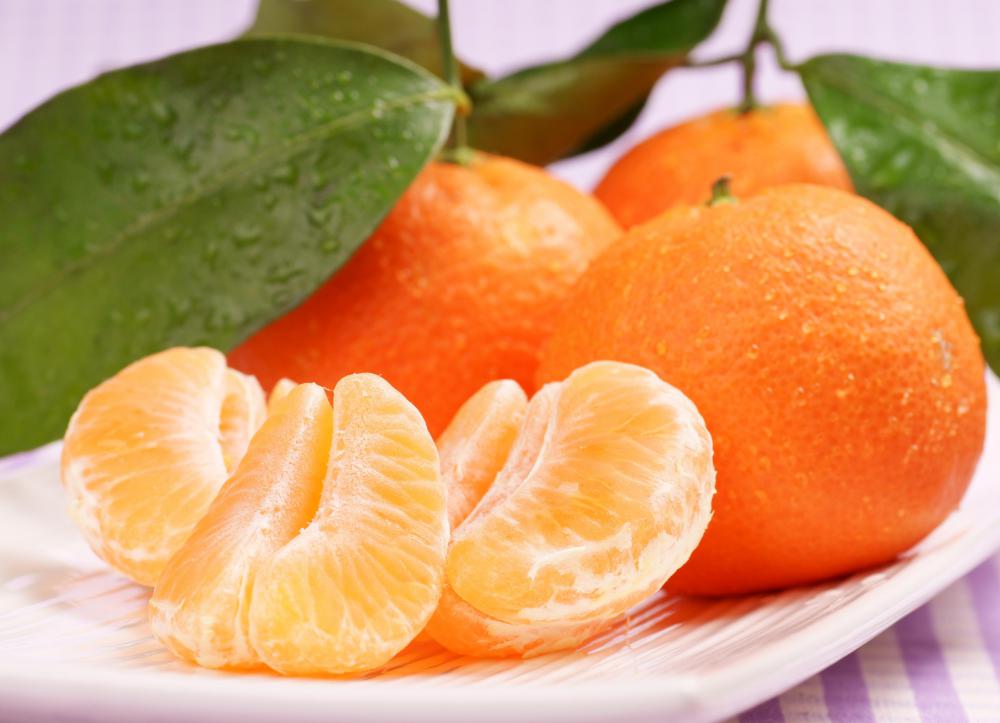At WiseGEEK, we're committed to delivering accurate, trustworthy information. Our expert-authored content is rigorously fact-checked and sourced from credible authorities. Discover how we uphold the highest standards in providing you with reliable knowledge.
What is a Clementine?
A clementine is the smallest of the mandarin oranges, or Citrus reticulata. The fruit is a slightly flattened sphere, about 2 inches (5 cm) in diameter. The glossy, deep orange peel is loose on the fruit, making it exceptionally easy to peel. Unlike its cousin the tangerine, it has no seeds and, in fact, one with seeds is evidence that bees have been at work cross-pollinating the trees with other fruit. For this reason, serious efforts are made to segregate the clementine trees, keeping the fruit seedless.
This fruit was given official cultivar status in 1902 and is named for Father Clément Rodier, an Algerian monk. As the story goes, Father Clément made the serendipitous discovery of a unique hybrid in the mandarin garden of his orphanage. Many believe, however, that the fruit originated earlier, in Asia, and eventually found its way to the Mediterranean region.

The clementine was integrated into California commercial citrus agriculture around 1914. By 1925, Spain was growing them commercially and, today, Spain is major producer and exporter of this fruit. California crops are prolific from late fall through January.
Packed snugly into their characteristic miniature wooden fruit crates, clementines are a popular sight during the winter holidays, earning them the nickname "Christmas oranges." They begin to appear in stores around the middle of November and are generally available through February.

If it is grafted onto dwarf root stock and pruned to maintain a height of about 6 feet (2 m), the tree can be grown by the home gardener as a container plant. The tree is evergreen, and the fruit are bright and attractive. If sufficient light and space are available, the potted plant may even be brought indoors.
Because clementines are easy to peel and readily separate into about 10 to 12 sections, they are a good addition to both fruit and green salads. Honey-sweet, loose skinned, and seedless, they are a favorite of adults and children alike, making them excellent lunchbox items.
The fruit is a good source of vitamin C, potassium, thiamin, and niacin. It also contains fiber and is a good natural energy boost. Clementines have almost no fat, and an average sized one has only about 35 calories.
AS FEATURED ON:
AS FEATURED ON:













Discussion Comments
This has been a good year for clementines here in AZ. Strong quality, not too unreasonable price.
They used to be reliably sweet and delicious, but I've noticed over the past few years that the quality just isn't there anymore; not sure why.
In 2007 I noticed that they were no longer showing up in our area (Minneapolis-St.Paul) in the mini-crates--but in smaller, no. 3 mesh bags, which cost slightly less per bag, and more than slightly more per number than the crates had.
Post your comments